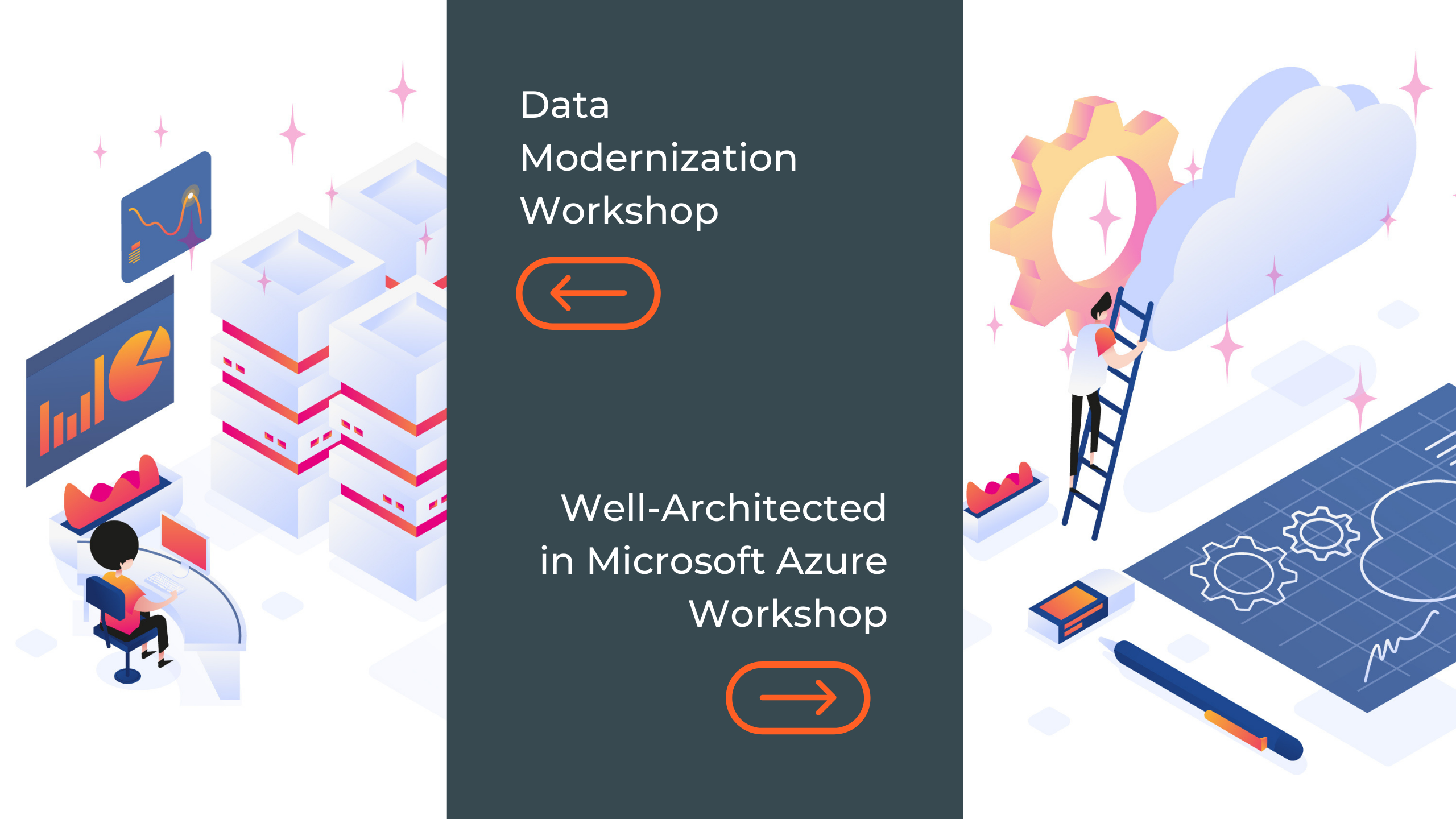
Mihai Tataran
General Manager & Partner | Azure MVP
I have been reading many materials, articles, etc. saying basically that „there is no Cloud, it’s just someone else’s computer”. Some of those articles, for instance, can be found here or here. These and others alike vary from nonsense to technical explanations about why it does not really matter if you host your solutions and data on your own server, or in the Cloud.
I manage Avaelgo, where we are at the forefront of the Cloud movement, with customers from Romania to EU and the US, from small online businesses to major banks. Having this kind of exposure and experience, I cannot stress enough how strongly I disagree with these opinions. And in this post, I will explain why.
The Five WHYs for Cloud
There are many reasons a Public Cloud provider is very different from a hosting organization, or from your own datacenter for that matter. I will enumerate just a few of those reasons.
Utility services vs fixed costs. Or OPEX vs CAPEX.
The Cloud is a revolution in the business model, as much as a revolution in technology. Probably one of the primary reasons for this is that with the Cloud you can pay for almost exactly how much you use. You make a subscription, you use as much as you need, and at the end of the month you pay for the service. No upfront investment in servers, no need to hire your own team of system administrators, or, your team will be smaller or able to bring more value to your business, doing something else than creating and administering basic infrastructure.
The same happened with the big change in electricity supply at the end of the 19th century when because of some technological innovations made by Tesla’s company, electricity started to be supplied on long distances. Before the alternating current, the electricity could not „travel” more than a few dozens of meters, hence if you needed electricity you had to have your own generator in your backyard. But that changed with Tesla and his company, who started to rent out electricity, hence reducing the overall cost and much more important allowed people and businesses to get electricity in a subscription model, without the big initial investment in a generator.
The same is happening with IT. Of course, as it happened with electricity – where we still see a lot of reasons for businesses to have their own generator (backup, security, etc.) – the same happens with the IT infrastructure: there are many scenarios where you still need your own.
One big – very big – trap, which I hear too many times when discussing with executives is that the Cloud is more expensive. hey look at
| Features with price included | Hosting provider VM | Microsoft Azure VM |
| Actual VM | YES | YES |
| Disaster recovery | NO (or sometimes) | YES |
| Backup (ability to recover the actual VM state) | NO | YES |
| Networking services | NO (or some) | YES (e.g.: Load Balancer) |
| Cost flexibility | NO (you pay full price per month) | YES (you pay per minute of usage) |
Simply put: a VM in the Cloud gets you more features, usually less administrative work, and the ability to pay per minute of usage instead of paying for a full month independent of the actual usage.
Prediction vs on demand infrastructure
Trying to estimate your future need of your IT infrastructure is very hard, when you want to build it on your own in your datacenter or at a traditional hosting provider. Say you launch an e-commerce website or an HR system for your company, and you need to evaluate how many servers you need to keep up with the demand. You either overspend – you make sure your IT infrastructure covers the highest demand peaks – or you don’t have sufficient resources for the peaks and you experience downtime or lose business.
What if you could have your solution scale on demand, on its own, based on your settings? Say, for my system, we start with 4 machines, but if the number of HTTP requests waiting in the queue (not being served) per second gets above 100, I want the system to expand with one more machine, and when the HTTP requests queue gets at 0, I want the system to decrease with 1 machine. Is it better that trying to guess? Of course, it is, and this is what the Cloud is about. A real Cloud Provider (and I said before, in my opinion, there are 3 real players, and many followers) gives you this ability.
Economy of scale
The 3 major Cloud Providers have huge economies of scale. We are talking about almost 40 Microsoft Azure regions (each region with at least 2 datacenters for failover), totaling millions of servers. They buy servers by the container, they buy a lot of Internet, they generate their own power, they use water for cooling, and then water is supplied as a utility to major cities nearby the datacenters. So they are much more efficient than any smaller hosting provider.
Why is this important? For at least two reasons:
- Because of this capacity they can serve us when we need it. For example, within some limits, creating a VM in Azure takes you a few minutes. Creating 100 VMs in Azure takes the same number of minutes.
- Because the price is going down. I just explained the technical reason for it (scale, getting bigger and bigger), and there is also the competition from AWS and Google.
Security
Yes, security. A few years ago many IT managers could not have imagined the words „Cloud” and „Security” in the same sentence. There are many reasons why your data and your application is more secure in a Cloud provider, than on your own premises or at a smaller company.
Why is a Public Cloud provider (usually) more secure than you or than a hosting provider? In short, because:
- Compliance and certifications
- Scale
- Technology
Compliance and certifications
In the very complicated internet and connected world we live in, with a lot of cybercrime for-profit activity from shady organizations, with cyberthreats poised by government agencies, and so on – it is harder and harder to maintain a decent level of security. That is one of the reasons why we have now standards like ISO 27018 or General Data Protection Regulation (GDPR), and the Public Cloud providers make a constant effort to keep up with them. They are complicated, they require many resources, and they imply that the entity who complies to them has a default level of security which is much higher than entities who do not comply.
Scale
Because Cloud providers have so many customers, they are exposed to many security attacks every single second of the day. The more companies have assets in the Cloud, the more attacks we see against the Cloud. Microsoft, for example, is able to continuously improve their ability to identify, prioritize and respond to the threats, by many measures one of which being threat intelligence. They simply employ Machine Learning techniques on the multitude of data (actions inside and outside their infrastructure), being able to detect patterns and engage predictive measures.
In simple words, if your assets reside in such a Cloud provider, you benefit out of the learnings they got from attacks on other customers of the same Cloud provider. And this usually happens in real time.
Technology
At least 2 of the major Cloud providers (Microsoft and Google) are also major technology providers. What do I mean by this? Well, if you are a software company, or an infrastructure company, or a company which offers hosting services, chances are you work with Microsoft or Google technology. They created or own some things like Windows, Windows Server, Hyper-V, Go, or even more applied to this topic Microsoft Intelligent Security Graph. These guys built the very products they are using to provide services to us. Whereas a hosting provider is using the products and technologies from those guys.
Who do you say is more qualified?
Operational capabilities
Besides the technology itself, one of the key factors to successfully run an infrastructure needed for a solution is the operational capability. Even if all the Cloud providers are constantly learning, and they still experience outages or downtimes, I would say chances are they are much more capable to operate an infrastructure than most companies, hosting providers included.
Just think about these things, which could have a major impact on your day to day business:
- Backup and Disaster Recovery. I already wrote about this here, not going to go into details now.
- Monitoring, diagnostics, and analytics. On your own premises and often at hosting providers, you must setup and manage those, while the Cloud providers offer you built-in monitoring tools.
- Automation. With technologies like Azure Resource Manager (ARM) it is extremely easy to setup an infrastructure, based on reusable templates, and then automate these tasks with tools like PowerShell.
Conclusion
There will always be a place for hosting providers, especially because the degree of customization they can offer, and there will always be the need to have some infrastructure on your own premises. But, the Cloud has a very strong proposition, both from the technical and the business perspective, it is here and it is gaining momentum, and the reasons not to be in the Cloud are shrinking every month.
About the author








